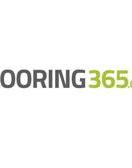For starters, what is Engineered Wood Flooring?
Engineered wood goes through a process of ‘engineering’ to create a more durable and rigid board, than achieved with standard solid wood. While solid wood flooring is ‘man made’, in that the boards have to be cut to size, sanded and finished, the material itself doesn’t need any construction before it can be turned into a floorboard.
Engineered wood, on the other hand, is created from different layers of timber. The top layer is real wood, the same that creates solid wood flooring, but this is fused with layers of softer wood or HDF under high intensity conditions. This process of layering means the engineered wood floorboard has more durability. The layers allow the floorboard to adapt to changes in heat and moisture conditions without permanently shrinking or warping.
Acclimatisation for flooring… what is it?
When flooring leaves the warehouse, where we store our products, it then moves onto a pallet then in a lorry… the temperature will not be the same as what it is in the room you are laying your flooring. Acclimatisation is where a person/object gets used to the atmosphere where it currently is situated.
What is the best method of acclimatisation for your flooring?
Place your packs of flooring horizontally (flat on the floor). Remove ‘open ends of packs’. This allows the flooring to get used to the room’s temperature. The recommended period of time for engineered wood to acclimatise is a minimum of two to three days. There is no limit for acclimatisation, but this is a minimum recommendation. Remove sentence.
Why should I let my floor acclimatise to the room?
We recommend letting your floor acclimatise to the environment because if it is not acclimatised, it risks future problems with your flooring. Here at Flooring365 we see flooring as a long-term investment. There could be problems later down the line as the flooring dries up… such as: Cracking, Warping and Splitting. This can be avoided by acclimatising the floor to the environment. When the floor gets too moist without being acclimatised the following problems may occur: Bowing, Buckling and Cupping.
What are the best rooms for Engineered Wood Flooring?
Nearly every room in the house suits Engineered Wood flooring, it can withstand moderate changes in temperature and humidity so it would be good for kitchens and conservatories. It is also suitable for rooms which have a large amount of glazing. Examples of rooms with a lot of glazing are Living Rooms, Dining Room, Bedrooms. It is strongly advised that if you are looking to add engineered wood flooring to rooms with a high temperature and high amount of moisture, eg: Bathrooms and Utility rooms, choose another type of flooring. We sell LVT which is perfect for bathrooms, just click on LVT on the menu at the top of the page or click here.
Please do note that some of the information in our blogs are the writer’s opinions. If you are looking for help with this blog topic, why not visit the live chat on the website for help?

